Are Libraries the Future of News?
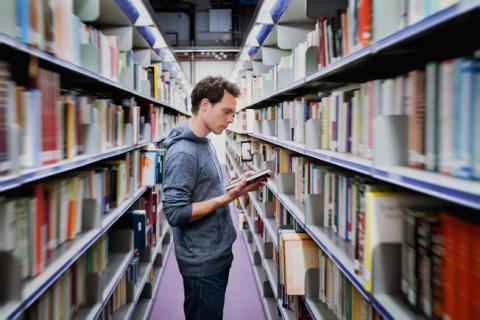
(Photo credit: Depositphotos.com)
This article was previously published in Popula.
On a cold Saturday last November I needed a place to work, and decided to head to a nearby branch of the Albany Public Library, a few blocks from my home. I found the place packed, with every seat taken on both floors. The library was warm; by this point in the fall, the city’s parks and streets were not. Eventually a seat opened up, and I unpacked my bag and opened my book. But after a few minutes, an altercation at the reference desk broke my concentration.
A man was visibly upset; he’d been trying to use the bathroom, it sounded like, but some other patron had been in there a long time — too long — and accusations were flying.
The librarian at the desk listened closely, validating the man’s concerns, hearing out the details of what he’d found so irritating and offensive. As she listened, he seemed to calm down, and eventually he withdrew. But a little while later he was back, even angrier than before. There had been another spat regarding the bathroom; voices raised, threats hurled. Again, the librarian listened attentively, responding with all the reasons why it wasn’t worth it to get into a brawl. Then she called a colleague in for help. He reinforced her position, patiently hearing everyone out. There’s no use, he kept saying, getting into a fight over this.
My sense that a physical fight might break out ebbed and flowed over the course of the confrontation, which took nearly an hour. There were several threats to “take things outside,” but the librarians’ calm and resolve never wavered. Eventually, everyone either left, or returned to their own activities.
I didn’t understand every detail of the conflict, but one thing was clear: I had just witnessed a masterful show of de-escalation. In so many other places and contexts, the cops would have been called at the jump.
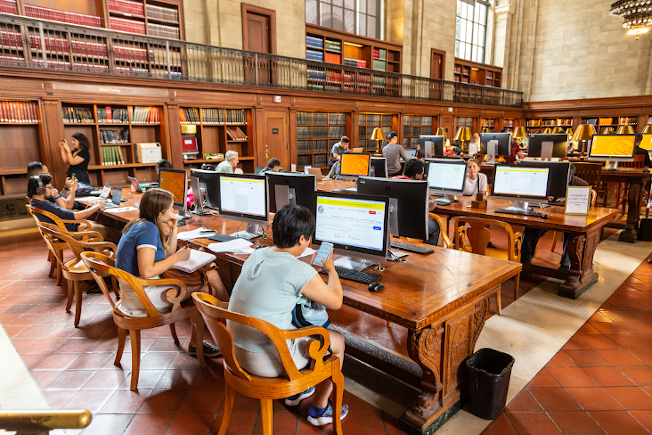
(Photo credit: Depositphotos.com)
I didn’t know whether to feel glad about the peaceable outcome, or disturbed by the fact that this dispute would never have taken place if people simply had access to basic necessities: a bathroom, safe claim to some personal space, and the unquestioned right to a warm place to sit when it’s cold outside. I walked home that day feeling angry that I live in a community where these necessities aren’t guaranteed to all; where people are pushed to fight over them; and where the only place one might hope to find a truly free place to rest and stay warm is the public library.
In a country where nearly every iota of our psyches and our physical spaces has been captured for the purpose of generating a profit, the ongoing existence of public libraries feels not just radical, but astonishing. What few public goods and systems we have are perpetually embattled. Public restrooms are disappearing. Public benches are being ripped out, casualties of the nation’s “war on sitting.” Public parks are disproportionately available to those who can pay. And yet, in spite of the many and concerted efforts to diminish, starve, and control them, public libraries live on. Here is a place where the unruly endeavor of sharing — and even co-owning — a space is met, not with the carceral impulse to discipline, but rather the impulse to support and to hear out. A place where everyone’s right to a bathroom, a place to sit, clean water, quiet—is clear, and assumed as a matter of course. A place where your ability to exist as a human being doesn’t depend on your ability to pay. Such an experience is so rare in the 21st century that it’s no wonder that people really, really love libraries.
I work in journalism, a field whose goals are (theoretically, at least) closely aligned with those of public libraries. Journalism, too, aims to make information accessible, so that people can participate in democracy — so that they can share stories, make informed decisions, and hold power to account. So that they can access the knowledge they need, in other words, to rule themselves.
But public sentiment towards these two systems differs by a huge margin. Close to 80% of adult Americans think “libraries provide them with the resources they need,” according to a survey published by the Pew Research Center in 2016; findings published by Pew in 2017 showed that a whopping 78% of adults felt that “public libraries help them find information that is trustworthy and reliable” and 56% said that “libraries help them get information that aids with decisions they have to make.” Among adults, millennials were libraries’ biggest fans: in a separate article published by Pew in 2017, millennials were reported to have used libraries “more than any other adult generation” over the previous year.
By contrast, people absolutely hate the media. According to Gallup data published in 2022, “Americans’ trust in the mass media to report the news ‘full, accurately, and fairly’” was at a near-record low of 34%, with just 7% having “a great deal” of trust and confidence in the media. A striking Gallup study of confidence in 16 U.S. institutions found newspapers in 12th place, and television news 15th — only Congress fared worse.

(Photo credit: Depositphotos.com)
So when I heard, some months ago, that Albany Public Libraries (APL) had partnered with the city’s local paper, the Times Union, to produce a series of articles, I wanted to learn more about it.
“We share a lot of the same goals,” Erica Smith, the managing editor for digital at the Times Union, told me. “When we talked about mission statements, there were so many similarities.”
Library Futures, a think tank and advocacy organization, initiated the collaboration when Executive Director Jennie Rose Halperin won a grant from Google News Initiative (GNI) to support newsroom-library partnerships. Halperin teamed up with Jennifer Brandel, CEO of Hearken, a company that helps newsrooms practice “engagement journalism” — a method that focuses on engaging communities in the news-making process. Along with MakeWith, a research and design consultancy, Library Futures and Hearken approached Albany Public Libraries and the Times Union about working together.
“We [both] want to make sure that everyone has access to the information they need to make decisions about their lives,” APL branch head Deanna DiCarlo said of the collaboration.
The original intent of the partnership was to improve access to news media through the library, but the group didn’t begin with a “predetermined plan” on how to do this. “We wanted to help the library better listen to its patrons to understand what the news needs were,” said Hearken’s Brandel. So the coalition put out a survey and, to the surprise of everyone involved, close to 800 Albany library patrons and residents replied.
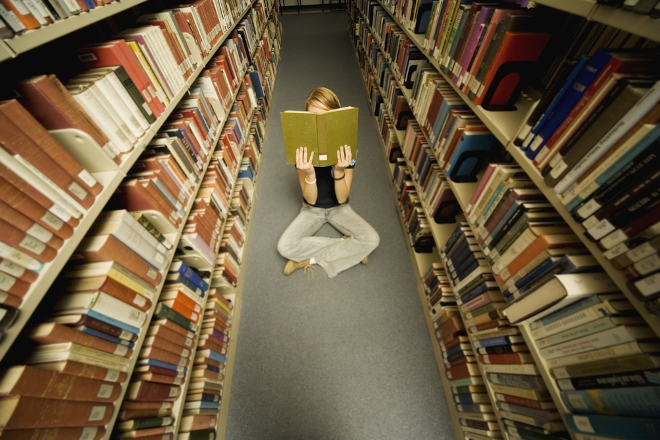
(Photo credit: Depositphotos.com)
“That’s unusual for us,” said DiCarlo. “Usually we put out a patron survey and we’ll get a couple hundred responses. The fact that 800 people were interested in local news and how it’s changed for them over the last couple decades … was [remarkable].”
The survey surfaced a lot of useful findings, but one stood out: According to the final report, 65% of those surveyed who did not use Times Union indicated that lack of access was the reason. “Subscriptions were the most cited need for patrons to improve access [to news].”
“At the beginning, we thought it would be amazing if there were a different relationship [between] libraries and [paywalled] newsrooms, in that newsrooms could offer consumer-grade versions of the news to library patrons,” said Brandel–in contrast, that is, with the library’s clunky, hard-to-use access tools, such as Newsbank, that were currently in use. “But that breaks a lot of the business model logic, which is a bigger, stickier issue.”
(If you’re wondering why it makes sense for purveyors of information to charge for access to information that is both about and for the public, you’re asking the right question.)
And so, instead of offering a digital, consumer-grade version of the paper to library patrons for free, the coalition decided to produce original journalism together. A budget of about $100,000 funded the group’s collaboration and the production of eight stories. Both the APL and the Times Union would own the articles, retaining the right to publish them on their own websites and digital channels, free of any paywall, and thus free for all to read.
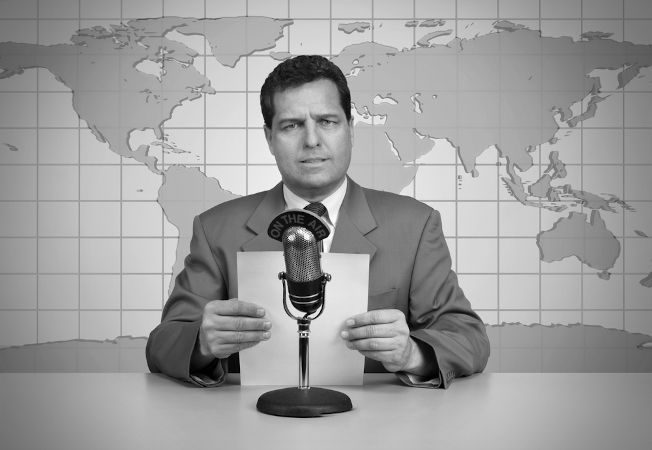
(Photo credit: Depositphotos.com)
The past, present, and future of Pearl Street, a long avenue running the length of the city, became the focus of the series, and APL and the Times Union began surveying their audiences, asking questions like “What’s needed for every block on Pearl Street to thrive?” As responses began to trickle in, Shayla Lee Colon, the series’ lead reporter, got to work.
Across the country, a variety of newsroom-library partnerships and experiments have sprung up in recent years. In Dallas, the local newspaper teamed up with the public library to teach students about community journalism; in Kansas City, community questions were publicly addressed through a collaboration between a local paper and the local library. Other collaborations have taken place in Chicago, Oakland, San Antonio, and in small towns and cities in New Hampshire and Georgia. Some of these experiments have involved nonprofit newsrooms, others legacy papers or public radio stations. All are relatively modest in scale: They are often finite, shaped by limited resources, and dependent upon the relationships of specific individuals at a newsroom or library. These projects represent links between existing institutions, rather than the creation of a new, third thing — a permanent collaborative mechanism for informing the public.
The project in Albany resembles these small initiatives. Nearly everyone I spoke with named the constraints of time as a challenge. “The series ended really well,” said Smith, of the Times Union. “[But] it still feels a little unfinished, from our side of things … it feels like we did the thing, we talked about it, and then stopped, which I think is something we often do as an industry.”
“This is where I have my biggest beef with philanthropy and how grants work,” Brandel told me. While she said that Library Futures and Google were able to give this project a lot of independence, “most of the time [philanthropy] requires you to have a hypothesis, put metrics on it, and say here’s what we think it’s going to do. [But] it would be so valuable for funders to think more expansively. When you give people money and permission to be emergent, amazing things happen, things that you never could have written into a grant.”
When asked about the community response to the Pearl Street project, Colon said that “initially, a lot of folks, if not all of them, were incredibly hesitant.”
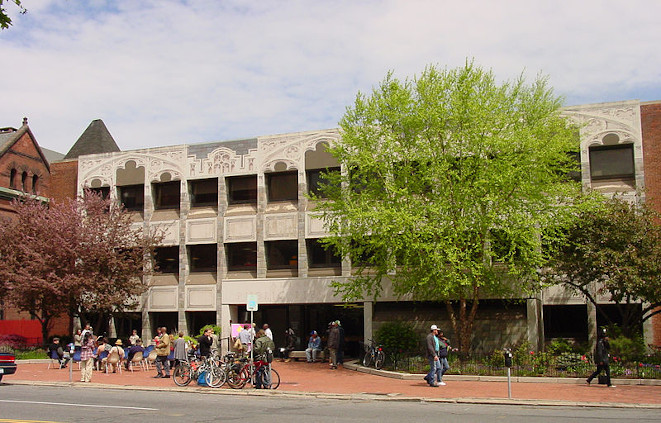
(Photo credit: Wikimedia.org, Creative Commons)
“I was a new reporter to the area, so maybe that was part of it, but also, I’m a reporter, period,” she said. “Trust is essential, and it’s not always there … Maybe there have been mistakes made in the past that cost that relationship, but I think lack of accessibility played a big part for [this] community.”
The Times Union is a traditional, for-profit newsroom. Is it possible, in practical terms, for an institution designed to answer to the needs of profit and shareholders be reformed into one that answers to the needs of a community? Ultimately, how can you ask people to trust information that you publish about them and their communities that they have to pay to access and, in many cases, can’t afford? It’s an unreasonable demand, but one that commercial outlets make of their audiences every day.
Still, these varied experiments suggest the glimmering possibility of something larger. In their imprints, it’s possible to see a different sort of world: one in which the collective resources that people love are protected and expanded, and in which people might actually own the stories produced about them and their communities. Victor Pickard, professor of media policy and political economy at the University of Pennsylvania, has described elements of this world, in particular the concept of “public media centers,” built upon existing public institutions like libraries and post offices, that could serve as “new anchor institutions.”
“There are over 30,000 post offices scattered across the country,” Pickard told me in an interview last year. “[We could have] a public media center in every community.” These centers could be places for “local journalists to set up shop, but could also provide broadband community and municipal broadband services.”
The larger story here, and the one that these modest collaborative experiments point to, is about democracy — something that only becomes possible when people have access to the knowledge needed to make individual and collective decisions. Too often, the people writing about these topics obscure the true stakes, and ignore the potential offered by the existing cultural infrastructure of libraries, media organizations, schools, and communication systems. In spite of the limitations, and against all the odds, what these humble, imperfect, but very cool partnerships suggest is that an entirely different way of sharing stories and information — and thus understanding our world — is possible, and that pieces of that possible future are already here.
At the conclusion of the APL/Times Union project, the team published a series of stories that covered everything from Pearl Street’s history to the local, regional, and global forces that define it today. With help from the APL’s librarians, Colon also published an article directly answering reader questions about the street’s cultural history, the origin of its name, and how the Times Union newsroom’s move from Albany’s downtown to the suburbs in 1970 affected the community.
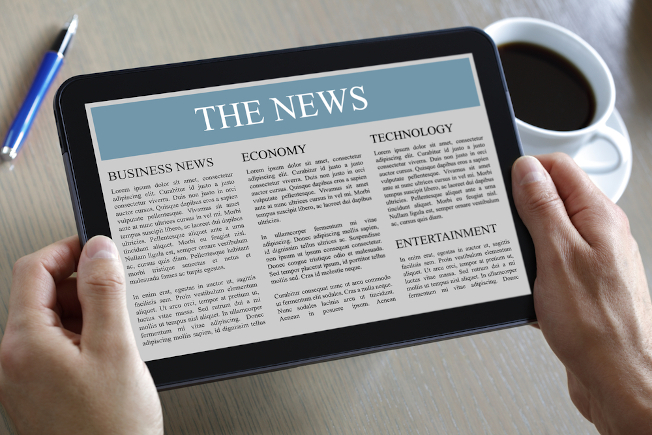
(Photo credit: Depositphotos.com)
Ivy Morris, a lifelong Albany resident and community activist, said she hoped to see the project grow. “The fact that [more than] 700 people responded [to the survey] is a good place to start—that’s a lot of people for Albany,” she said. “Maybe people aren’t crazy about the media, but they love the library… So libraries should have a bigger role.”
Everyone who participated in the pilot project in Albany had a blast. “I absolutely want more of this,” Colon told me. In fact, collaboration between the library and the newsroom has continued, to a degree. At the end of 2022, the Times Union received a grant from the American Press Institute to work with Albany Public Libraries to host a series of community listening sessions and publish a voter guide. Both APL and the Times Union emphatically expressed a desire to keep working together.
“We have a lot of staff members who would love to [work on something like this],” said DiCarlo. “If I could assign five or six librarians to it, that would be huge. That’s kind of what we hope the outcome will be, for anyone who reads the case study: This is a doable model, this proves that it works. You just need the resources.”
Months after the project concluded, I attended a screening of short films written, shot, and produced by local high school students through a program put on by YouthFX, an organization that works with young people of color, mostly from Albany’s South End, Arbor Hill, and West Hill neighborhoods. For one of the projects, filmmakers interviewed students at Giffen Memorial, a public school located near South Pearl Street, about where they felt safe. Ten-year-old Koepaomu answered: the library, a place where people can have “a peaceful, quiet place to relax and do your things.” She elaborated:
It’s important to have spaces like the library and even if we get more, I don’t mind, because people who have bad luck and bad days can go to it. They can meditate and relax and think about the good times, instead of their bad luck and stuff. I want them to feel special and unique like they belong to this place…
They should feel the way I feel when I go to the library. I feel like I’m in a dream. I feel like I’m flying on the clouds, like looking down on the city, and I feel like I can spread my wings and fly on the things I think of.
As she finished speaking, the crowd was in tears. There were many reasons for that, but for me, one was the way in which Koepaomu captured how libraries feel — how, often, they can be experienced as places outside of space and time; as small territories to retreat from the unstable, transactional realities of the world, and as pathways to a sense of belonging, and even safety, in a deeply unsafe time. Libraries represent the best of our efforts to take care of one another. Their ongoing existence is a reminder that — not just in some far-off future, but even today — other ways of being are possible.
Frequently, we are told that “fixing” the news — local news in particular — is complicated. But in fact, I suspect that what’s most needed is relatively simple. The central task is not “fixing” local news by rebuilding trust in old, failing models, or spending millions retroactively swatting at misinformation, or begging Silicon Valley’s social media potentates to behave themselves. The central task, as Darryl Holliday, co-founder of City Bureau, put it in a 2021 article for the Columbia Journalism Review, is to “democratize the means of journalistic production.”
“Journalism is a public good,” the headline of his article read. “Let the public make it.”
Libraries are evidence that when you make a public good truly public — when you make it owned, structurally, by everyone — people actually like that, a lot.
Author Bio:
Kate Harloe is a freelance writer. She often writes about media and politics, with a special focus on New York State, where she grew up and currently lives.
This article was published by the Nieman Lab. It’s republished here with permission via DISCO Content Marketplace.
Highbrow Magazine
Image Sources:
--Albany eLibrarian (Wikimedia.org, Creative Commons)































































































































































































































































































































